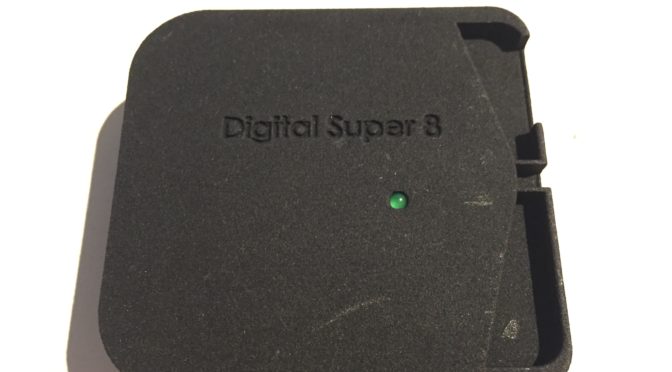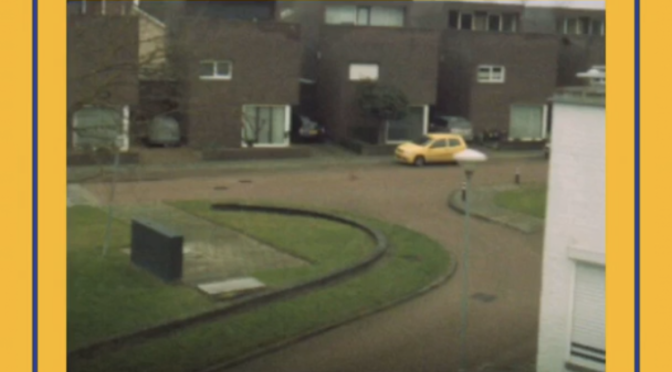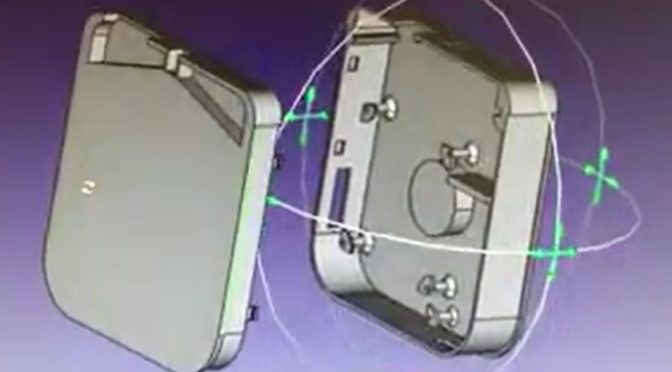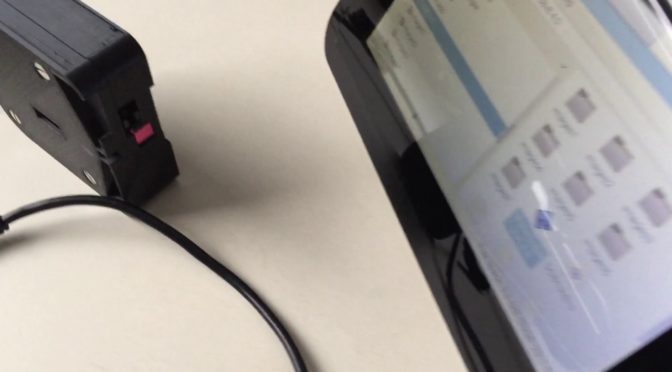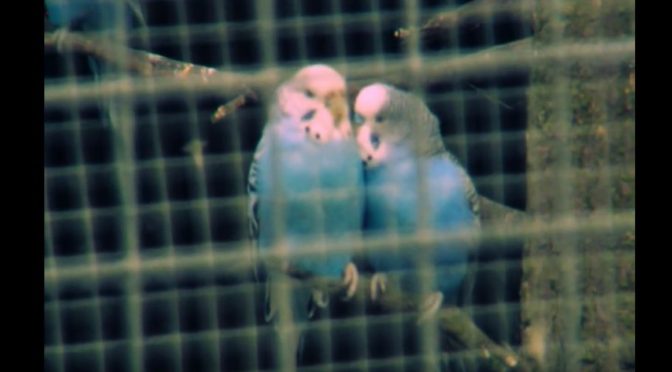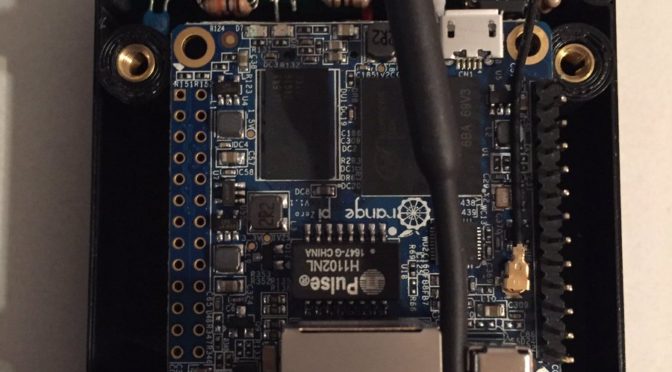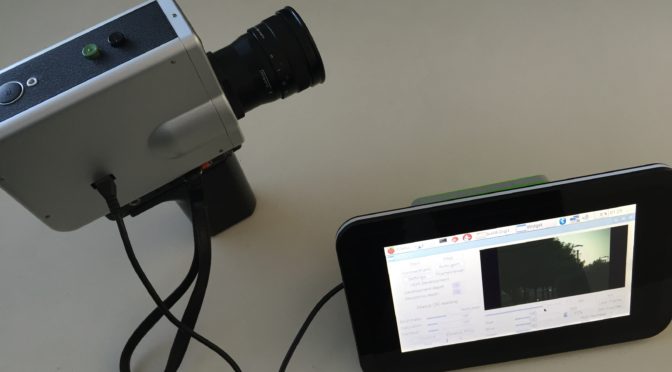this one minute video shows how the Digital Super8 app works with the cartridge that’s in the Super8 camera.
Category: Digital Super 8
Posts about Digital Super 8 cartridge
Smartphone App for Digital Super8
So we’re working hard on the Digital Super8 app for smartphones. To fully control the Digital Super8 cartridge and all settings. To provide monitoring while filming as well as when doing trial shots without actual recording. And to allow viewing the footage you shot.
The Digital Super8 cartridge sets up its own WiFi access point for your smartphone to connect to and then through the app you fully take control, while you’ve got the cartridge slid into your Super8 camera.
At this time we’re ironing out some minor challenges to increase the performance of the monitoring and viewing of captured shots. Using multi-threading to ensure that the RAW images get displayed in full color and smoothly.
Stay tuned.
NanoPi Neo Air in Digital Super 8 Cartridge
Parts list of the digital super-8 cartridge
To provide more information about our Digital Super-8 Cartridge solution we publish the ‘bill of materials’. This is for the version with external module. Development is underway for a new prototype with no external module, it will have all electronics inside the cartridge.
Bill of materials:
The Cartridge: 3D printed Super8 cartridge, Ximea MU9-MBRD subminiature camera (with Aptina MT9P031 sensor), our own designed shutter sync circuit PCB with photodetector for film claw detection, microUSB breakout board with image capture indication LED, IR Filter, connector cable from PCB to microUSB board, high quality USB cable to connect cart to external module.
External module: Raspberry Pi3, 32GB SanDisk microSD card, Raspberry Pi touch screen with plastic casing, 6600 mAh power bank with microUSB cable to power the module.
Code: C++ application designed built on Qt Creator to control the capturing, settings, and to develop raw images into video, colorgrading.
Digital Super8 Cartridge footage in HD
We shot some new footage to test the quality of the Digital Super8 Cartridge. Our software app takes the RAW Bayer images of the cartridge and performs S-Log encoding before we do any further processing. Using the Digital Super8 application we added contrast with S-curve and then applied individual S-Curves on the RGB channels to add warmth. Because Digital Super8 consists of individually captured 12 bit RAW images (global shutter) there’s a lot of flexibility in how to process afterwards. One could do B&W, natural color, warm, cool or whatever else. Also the software provided allows for export of TIFF image format.
The Nizo 801 Macro we used has some motor instability, leading to a bit of flicker.
All electronics inside the Digital Super 8 Cartridge
We’ve got a working prototype of the Digital Super 8 Cartridge that runs with the Raspberry Pi 3 in an external module with touch screen. Benefits of that solution is the high level of control of operating the Digital Super 8 Cartridge and its settings through the touch screen. Plus the additional real-time monitoring of what is being filmed (in B&W) is a plus.
However the drawback is that the ‘filmtype viewing pane’ of the super 8 camera has to be knocked out of your camera in order to enable the USB connection from the cartridge to the external module.
Some people have suggested to us to try and fit all electronics into the cartridge. Clearly we had to find a smaller Single Board Computer than the Raspberry Pi. Ports and test with the NextThing Co. C.H.I.P. SBC failed as this single core ARM SBC is simply not powerful enough. Now our hopes are on the Orange Pi Zero, which sports a quad-core ARMv7 SOC in a tiny form factor. We have ported the software and the OPI Zero performs reasonably well. Great results for VGA and QHD resolutions. But we need to find optimisations in the code and push for the 720p to runs without dropping frames as well. Whether this will be at all possible we don’t know yet.
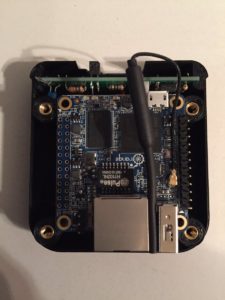
Benefits of this solution is that the Digital Super 8 Cartridge can simply be dropped into your camera and you don’t have to work with external module or screen. However the cartridge will have to provide a few buttons and LEDs for powering on/off and controlling settings. Alternatively we are looking at using VNC to provide connection via WiFi to your smartphone where you can then see the desktop of the Digital Super 8 cartridge and control its settings.
We are now waiting for the appropriate Lithium Polymer battery and boost/charge circuit and first need to get all the electronics really to fit within the cartridge. More to follow.
New Digital Super 8 footage
We managed to encode the RAW Digital Super 8 images with S-Log (following Sony’s algorithm). Then processing those with simple S-curve and tweaking colors, saturation and brightness/contrast a bit leads to great results, as show below:
Earlier (before we did S-Log encoding, only gamma encoding) we shot a few new samples with fully portable Digital Super 8. Below a summer sky time lapse (1280 x 720)
and autumn colours in QHD:
and the the same capture rendered as Black & White. To demonstrate the power of Digital Super 8 cartridge shooting individual RAW images in 12 bit (!) bit depth. The Digital Super 8 software tools allow rendering and controlling RGB channels, color cast, saturation, contrast, brightness, HDR and fps.
Code update 4 – improving buffering
Over the last couple of weeks a lot of spare time went into improving the code that controls the image capturing. The main bug to address was that the image capturing would ‘hang’ after a certain amount of time when capturing say round 10 seconds or more of 720p 12 bit images.
We revisited the code and the multi-threaded buffering algorithm. Putting the buffer and the code that empties the buffer on a separate thread, away from the main user interfacing window thread dramatically improved the performance. The ‘hanging’ capturing was solved except for the fact that at some times the output of Ximea API messages can still interfere with the code, which is at the capturing stage pushing all boundaries of the raspberry pi 3. When run with an open terminal window the problem is solved but we will ‘silence’ the API output further in order to completely solve the issue.
The only other point to note is that when capturing 720p resolution (the highest option) and at 12 bit, the image capture buffer fills up quite rapidly as the large RAW images take time to be written to microSD card. When ~300 images are in the buffer the raspberry pi sort of gives up and starts ‘sputtering’. Waiting long enough for the buffer to empty solves the situation but you will lose images.
Best options in this ‘best mode’ are to capture shorter shots. Also scaling back to 8 bit RAW dramatically slows down filling up of the buffer. Another option is to move to 540p at 12 bit.
A final ‘disturbing’ issue is that the Ximea camera every now and then ‘disconnects’ and throws an error. The ConnectCam button needs to be pressed to reset the connection and filming can resume. Whether this is a bad USB cable issue or something else will be investigated.
Digital Super 8 outdoors test
We took the wearable control unit and the Digital Super 8 cartridge outside for some portable testing.
At dusk we shot the grapes growing in the garden. First part is dark at 200 ASA but we also tested the autogain function that increases the CMOS sensor gain as necessary, leading to better brightness. At the cost of noise in the images of course.
We decided to not color correct the images, just take the 12 bit RAW images (as always) and do the gamma correction. But leaving brightness, saturation, contrast, red, blue and green in their default state. Pretty pleasing results, filmed with the Nizo 481 macro lense at dusk.
Digital Super 8 wearable setup
The Digital Super 8 cartridge sits inside the Nizo 481 and connects to the Raspberrypi powered control unit with touch screen.
Powered by a rechargeable power bank.
